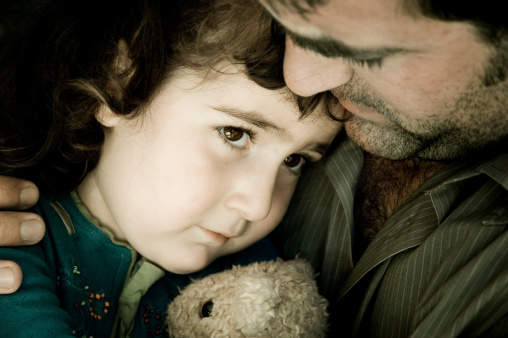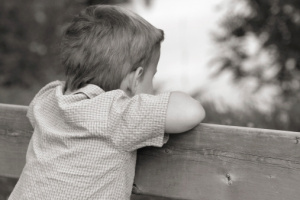 In divorce many people hire attorneys with the hope of receiving what the law entitles them to receive. They focus on their rights and ask their lawyer to help them get what “the law” provides, perhaps believe that this is the best way to protect their interests. Most people don’t realize how focusing on the law and “rights” is setting the bar very low and on occasion, guarantees them that they will need to settle for the very minimum rather than trying to achieve their most important goals.
Divorce laws are created to establish minimum standards for the government to apply if the family cannot come up with a solution on its own. For example, the child support guidelines give you an idea about the minimum amount that would be required for the support of your children if a judge is required to intervene. The property division that your lawyer tells you will be ordered under “the law” merely describes the minimum that the law will compel. The parenting schedule normally describes the minimum times that you must be allowed to see your children. Nevertheless, it is a curious aspect of divorce law that people often start out focusing on those minimums and do not stop to reflect on what might be possible.
Striving for minimums is an unusual way to begin down any path, particularly with something as important as family relationships. Outside of divorce, few of us would ever think that we should provide only the minimum to our family members. We would rarely respond to needs of our children, or our spouse, or a parent or even an aunt or uncle for that matter, and say “what is the very minimum that the law would compel me to do?” To the contrary, faced with these situations outside of divorce, we would be drawn to think in terms of doing the right thing; doing the best we can do under the circumstances. Yet, as soon as we enter the divorce world, we automatically assume this “minimum only” mentality and we hire lawyers to fight over those minimums.
No doubt some you are thinking that divorce is different because you are dealing with an ex spouse and that the rules of conscience and decency should not have the same sway as with a real family member. But is that really how it is?
First of all, if there are children involved, it is difficult to enforce minimums without catching them in the crossfire. Because your children will live in the same house as your former spouse for a significant portion of their lives, there is no way to force your spouse to accept minimums without impacting your children, at least to a degree. In addition, is your spouse, the mother or father of your children, someone who can be immediately relegated to the role of non-relative and allow you to feel a complete indifference to their well-being, (or worse)? No doubt, many divorcing people have found ways to view of their ex spouse in this way. However, most people, once they get past the anger, fear or sadness, admit that they do not hold this complete indifference and, in fact, express real caring, and concern for their ex spouse.
So, how do we shed the “minimums” mentality and approach divorce by setting the bar much higher? It will take more than one blog to cover the many different ways to create better settlements by appealing to higher standards. But here is a start. Go to www.collaborativelaw.org or to www.divorcechoice.com and find a divorce professional who speaks this language. You may be surprised by what is possible.
In divorce many people hire attorneys with the hope of receiving what the law entitles them to receive. They focus on their rights and ask their lawyer to help them get what “the law” provides, perhaps believe that this is the best way to protect their interests. Most people don’t realize how focusing on the law and “rights” is setting the bar very low and on occasion, guarantees them that they will need to settle for the very minimum rather than trying to achieve their most important goals.
Divorce laws are created to establish minimum standards for the government to apply if the family cannot come up with a solution on its own. For example, the child support guidelines give you an idea about the minimum amount that would be required for the support of your children if a judge is required to intervene. The property division that your lawyer tells you will be ordered under “the law” merely describes the minimum that the law will compel. The parenting schedule normally describes the minimum times that you must be allowed to see your children. Nevertheless, it is a curious aspect of divorce law that people often start out focusing on those minimums and do not stop to reflect on what might be possible.
Striving for minimums is an unusual way to begin down any path, particularly with something as important as family relationships. Outside of divorce, few of us would ever think that we should provide only the minimum to our family members. We would rarely respond to needs of our children, or our spouse, or a parent or even an aunt or uncle for that matter, and say “what is the very minimum that the law would compel me to do?” To the contrary, faced with these situations outside of divorce, we would be drawn to think in terms of doing the right thing; doing the best we can do under the circumstances. Yet, as soon as we enter the divorce world, we automatically assume this “minimum only” mentality and we hire lawyers to fight over those minimums.
No doubt some you are thinking that divorce is different because you are dealing with an ex spouse and that the rules of conscience and decency should not have the same sway as with a real family member. But is that really how it is?
First of all, if there are children involved, it is difficult to enforce minimums without catching them in the crossfire. Because your children will live in the same house as your former spouse for a significant portion of their lives, there is no way to force your spouse to accept minimums without impacting your children, at least to a degree. In addition, is your spouse, the mother or father of your children, someone who can be immediately relegated to the role of non-relative and allow you to feel a complete indifference to their well-being, (or worse)? No doubt, many divorcing people have found ways to view of their ex spouse in this way. However, most people, once they get past the anger, fear or sadness, admit that they do not hold this complete indifference and, in fact, express real caring, and concern for their ex spouse.
So, how do we shed the “minimums” mentality and approach divorce by setting the bar much higher? It will take more than one blog to cover the many different ways to create better settlements by appealing to higher standards. But here is a start. Go to www.collaborativelaw.org or to www.divorcechoice.com and find a divorce professional who speaks this language. You may be surprised by what is possible.  In divorce many people hire attorneys with the hope of receiving what the law entitles them to receive. They focus on their rights and ask their lawyer to help them get what “the law” provides, perhaps believe that this is the best way to protect their interests. Most people don’t realize how focusing on the law and “rights” is setting the bar very low and on occasion, guarantees them that they will need to settle for the very minimum rather than trying to achieve their most important goals.
Divorce laws are created to establish minimum standards for the government to apply if the family cannot come up with a solution on its own. For example, the child support guidelines give you an idea about the minimum amount that would be required for the support of your children if a judge is required to intervene. The property division that your lawyer tells you will be ordered under “the law” merely describes the minimum that the law will compel. The parenting schedule normally describes the minimum times that you must be allowed to see your children. Nevertheless, it is a curious aspect of divorce law that people often start out focusing on those minimums and do not stop to reflect on what might be possible.
Striving for minimums is an unusual way to begin down any path, particularly with something as important as family relationships. Outside of divorce, few of us would ever think that we should provide only the minimum to our family members. We would rarely respond to needs of our children, or our spouse, or a parent or even an aunt or uncle for that matter, and say “what is the very minimum that the law would compel me to do?” To the contrary, faced with these situations outside of divorce, we would be drawn to think in terms of doing the right thing; doing the best we can do under the circumstances. Yet, as soon as we enter the divorce world, we automatically assume this “minimum only” mentality and we hire lawyers to fight over those minimums.
No doubt some you are thinking that divorce is different because you are dealing with an ex spouse and that the rules of conscience and decency should not have the same sway as with a real family member. But is that really how it is?
First of all, if there are children involved, it is difficult to enforce minimums without catching them in the crossfire. Because your children will live in the same house as your former spouse for a significant portion of their lives, there is no way to force your spouse to accept minimums without impacting your children, at least to a degree. In addition, is your spouse, the mother or father of your children, someone who can be immediately relegated to the role of non-relative and allow you to feel a complete indifference to their well-being, (or worse)? No doubt, many divorcing people have found ways to view of their ex spouse in this way. However, most people, once they get past the anger, fear or sadness, admit that they do not hold this complete indifference and, in fact, express real caring, and concern for their ex spouse.
So, how do we shed the “minimums” mentality and approach divorce by setting the bar much higher? It will take more than one blog to cover the many different ways to create better settlements by appealing to higher standards. But here is a start. Go to www.collaborativelaw.org or to www.divorcechoice.com and find a divorce professional who speaks this language. You may be surprised by what is possible.
In divorce many people hire attorneys with the hope of receiving what the law entitles them to receive. They focus on their rights and ask their lawyer to help them get what “the law” provides, perhaps believe that this is the best way to protect their interests. Most people don’t realize how focusing on the law and “rights” is setting the bar very low and on occasion, guarantees them that they will need to settle for the very minimum rather than trying to achieve their most important goals.
Divorce laws are created to establish minimum standards for the government to apply if the family cannot come up with a solution on its own. For example, the child support guidelines give you an idea about the minimum amount that would be required for the support of your children if a judge is required to intervene. The property division that your lawyer tells you will be ordered under “the law” merely describes the minimum that the law will compel. The parenting schedule normally describes the minimum times that you must be allowed to see your children. Nevertheless, it is a curious aspect of divorce law that people often start out focusing on those minimums and do not stop to reflect on what might be possible.
Striving for minimums is an unusual way to begin down any path, particularly with something as important as family relationships. Outside of divorce, few of us would ever think that we should provide only the minimum to our family members. We would rarely respond to needs of our children, or our spouse, or a parent or even an aunt or uncle for that matter, and say “what is the very minimum that the law would compel me to do?” To the contrary, faced with these situations outside of divorce, we would be drawn to think in terms of doing the right thing; doing the best we can do under the circumstances. Yet, as soon as we enter the divorce world, we automatically assume this “minimum only” mentality and we hire lawyers to fight over those minimums.
No doubt some you are thinking that divorce is different because you are dealing with an ex spouse and that the rules of conscience and decency should not have the same sway as with a real family member. But is that really how it is?
First of all, if there are children involved, it is difficult to enforce minimums without catching them in the crossfire. Because your children will live in the same house as your former spouse for a significant portion of their lives, there is no way to force your spouse to accept minimums without impacting your children, at least to a degree. In addition, is your spouse, the mother or father of your children, someone who can be immediately relegated to the role of non-relative and allow you to feel a complete indifference to their well-being, (or worse)? No doubt, many divorcing people have found ways to view of their ex spouse in this way. However, most people, once they get past the anger, fear or sadness, admit that they do not hold this complete indifference and, in fact, express real caring, and concern for their ex spouse.
So, how do we shed the “minimums” mentality and approach divorce by setting the bar much higher? It will take more than one blog to cover the many different ways to create better settlements by appealing to higher standards. But here is a start. Go to www.collaborativelaw.org or to www.divorcechoice.com and find a divorce professional who speaks this language. You may be surprised by what is possible. 





 No one imagines they will find themselves single, divorced, and living in a 4 bedroom house in the suburbs alone, and then it happens. So what do you do when you wake up and realize that your life is not at all what you ever imagined it would be? How do you “cope” and “mourn” the loss of the life you had been planning for yourself?
First, remember you are not alone. You are never alone in this. Lean on your friends, family, and a good support group – whether it’s a support group you created with a network of friends and family, or a more formal divorce support group in your area. There are so many resource out there, find people/places/networks that you feel comfortable with. Seek out professional counseling or therapy, sometimes just talking about these hopes and dreams that could have/should have/would have been to a neutral party can be such a relief.
Know that it is ok to mourn this loss. For you it may be the loss of the “perfect family” you had envisioned – whether you never had kids and always wanted them, or had 1 or 2 and had wanted more. Maybe for someone else who is forced to go back to work because of the divorce, it may be the loss of being able to stay at home with the children. Perhaps it’s the loss of a certain lifestyle one may have gotten used to or thought they would attain someday, whether financially or within a certain social circle. Maybe divorce forced you to move to new area and you are mourning the loss of being close to your friends, in a certain school district for your children, or even simply mourning the loss of your home. It’s not irrational to mourn these things, whether they are lifestyles and material items you no longer have, or were simply hopes for the future – it is ok.
Take comfort in knowing that you never know what the future has in store for you. Maybe you always wanted kids and suddenly find yourself dating someone with children that you simply adore (young or old). Think you’re too old for that reality? Maybe you will remarry and have pile of grandchildren in your future. Maybe having to go back to work will one day lead to a promotion that allows you to take your children on trips of a lifetime and provide for their college education. There is a quote by Joseph Campbell that reads, “We must be willing to let go of the life we had planned, so as to have the life that is waiting for us.” Remember that.
No one imagines they will find themselves single, divorced, and living in a 4 bedroom house in the suburbs alone, and then it happens. So what do you do when you wake up and realize that your life is not at all what you ever imagined it would be? How do you “cope” and “mourn” the loss of the life you had been planning for yourself?
First, remember you are not alone. You are never alone in this. Lean on your friends, family, and a good support group – whether it’s a support group you created with a network of friends and family, or a more formal divorce support group in your area. There are so many resource out there, find people/places/networks that you feel comfortable with. Seek out professional counseling or therapy, sometimes just talking about these hopes and dreams that could have/should have/would have been to a neutral party can be such a relief.
Know that it is ok to mourn this loss. For you it may be the loss of the “perfect family” you had envisioned – whether you never had kids and always wanted them, or had 1 or 2 and had wanted more. Maybe for someone else who is forced to go back to work because of the divorce, it may be the loss of being able to stay at home with the children. Perhaps it’s the loss of a certain lifestyle one may have gotten used to or thought they would attain someday, whether financially or within a certain social circle. Maybe divorce forced you to move to new area and you are mourning the loss of being close to your friends, in a certain school district for your children, or even simply mourning the loss of your home. It’s not irrational to mourn these things, whether they are lifestyles and material items you no longer have, or were simply hopes for the future – it is ok.
Take comfort in knowing that you never know what the future has in store for you. Maybe you always wanted kids and suddenly find yourself dating someone with children that you simply adore (young or old). Think you’re too old for that reality? Maybe you will remarry and have pile of grandchildren in your future. Maybe having to go back to work will one day lead to a promotion that allows you to take your children on trips of a lifetime and provide for their college education. There is a quote by Joseph Campbell that reads, “We must be willing to let go of the life we had planned, so as to have the life that is waiting for us.” Remember that. 


